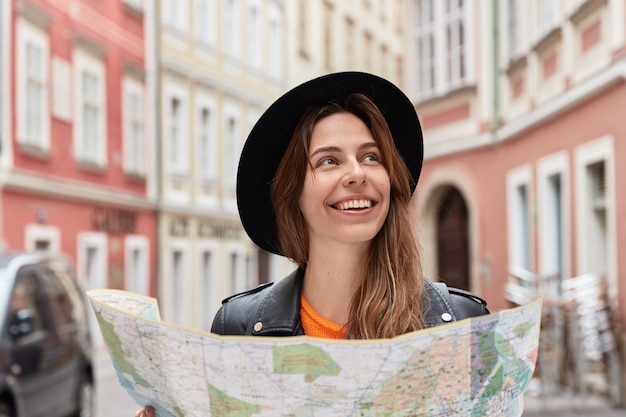
Hello from Granada, Spain! I’ve been doing my best to stay off the computer while traveling around Europe, and I think I’m doing pretty well, though my boyfriend might disagree. My amazing virtual assistant is taking care of most of the work behind the scenes, and I managed to schedule all my posts in advance, which is a huge surprise since I usually do everything at the last minute.
Let’s get back to the trip! I arrived in Paris a couple of weeks before my boyfriend, which gave me time to catch up with family and friends and take care of a few errands. The weather was beautiful during those first ten days, feeling like summer again, and I thoroughly enjoyed it. I even bought new jogging pants and started running every other day, covering about 10 kilometers each time. Running in Paris was a breeze compared to the hot and humid conditions in Guatemala, with mild weather and flat, well-paved streets. No wonder Kenyan runners, who train at high altitudes, excel in European marathons.
All that running made me hungry, so I went a bit overboard with the food. When you’ve been dreaming about the cuisine for months, you end up wanting to try everything, leading to some unusual meals. Cheese and oysters, anyone? I know, it sounds odd, but every day I’d buy a fresh baguette from the bakery and some nice cold cuts or cheese to go with it.
I didn’t have much trouble adjusting to the eight-hour time difference or the exhausting three-day journey from Guatemala to Paris, which included a major flight hiccup and a pricey $1,500 bill to cross the ocean.
After my boyfriend arrived, we hit the road on our bike to Mont Saint Michel in Northern Brittany. The scenery was lovely, but the weather had turned cold and rainy, making it tricky to stay dry. We visited the bay of Mt St Michel, enjoyed oysters and mussels for lunch by the sea, and spent the afternoon exploring St Malo, a charming medieval coastal town.
From Paris, we also visited the fishing port of Honfleur and other coastal towns known as “Paris-on-the-sea” due to their proximity to the capital and the number of Parisians with holiday homes there. To truly experience the countryside, you have to go a bit further out.
We had a chance reunion with a French-Guatemalan couple we knew, who were also vacationing in Brittany, and spent a night together. After that, my boyfriend and I headed south to Marennes-Oléron, another hotspot for oysters. My boyfriend jokes that the French have a quality seal, AOC (Appellation d’Origine Contrôlée), for everything. It indicates origin and quality, like Champagne that can only come from the Champagne region. We enjoyed three dozen oysters and a dozen clams, paired with a bottle of regional white wine. Everything was delicious.
Next, we arrived in Bordeaux, one of France’s most beautiful cities, especially now that the historical center has been renovated. We met with another French-Guatemalan couple; the wife was a high school friend my boyfriend hadn’t seen in years. They took us to their holiday house in Hossegor, where I enjoyed a beautiful run along the ocean and an inland lake. We had yet another amazing seafood dinner with them—too much food!
We then moved on to the Basque Country. The French side is very picturesque. We visited Espelette, known for its dried chilis, and Saint Jean de Luz, a coastal town with a lovely beach and stunning summer houses. On the Spanish side, while it’s less picture-perfect, there’s much more activity. The French countryside feels almost empty, but in Spain, you see people everywhere—harvesting, growing, and selling their products. We quickly passed through San Sebastián and headed to Bilbao.
That’s it for the first part of our trip in France. More updates next week!
As for costs so far, I haven’t kept a detailed tally but we’re spending about 100 euros a day ($130) for both of us. This includes roughly one-third for the bike (tolls and gas), one-third for accommodation, and one-third for food and activities. I’m trying to fund the trip with my online income since my boyfriend covered last year’s European trip.
In France, we often stayed at Hotel F1, a budget chain costing around 19 euros per night. These hotels are clean and functional but with shared bathrooms. If you prefer a private bathroom, Ibis Budget rooms start from 35 euros per night. Both chains can be booked on Accorhotels.com. The downside of traveling by bike is the unpredictability—rain, traffic, or extended sightseeing makes it hard to book hotels in advance, leading to less favorable deals.
Through a combination of these budget chains and Booking.com in Spain and Portugal, we’ve averaged about $40 a night, which is cheap for Europe. Right now, I’m writing from a 25 euro ($30) hotel in Granada, which is well-located and clean.
We typically opt for the “meal of the day” lunch special, costing about 12 euros in France and under 10 euros in Spain and Portugal. This usually includes a first course, main course, wine, and bread. For breakfast and dinner, we visit local markets for bread, cheese, and fruit.
Breakfast is another cost to watch. An extra 5 euros for a “free breakfast” at a hotel can be cheaper than buying coffee and a croissant at a café, though hotel breakfasts aren’t always impressive—mostly bread, jam, and a few biscuits.
For the best deals, book early if you know your travel dates. Tourism in Europe is bustling even in October, with some hotels fully booked six weeks past peak season.
See you next time!